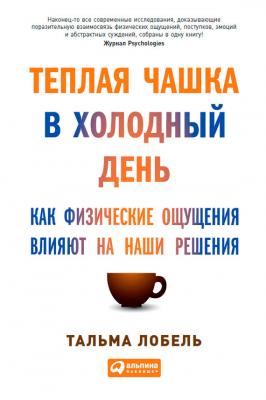ТОП просматриваемых книг сайта:
Теплая чашка в холодный день. Как физические ощущения влияют на наши решения. Тальма Лобель
Читать онлайн.Название Теплая чашка в холодный день. Как физические ощущения влияют на наши решения
Год выпуска 2014
isbn 978-5-9614-3547-4
Автор произведения Тальма Лобель
Жанр Общая психология
Конец ознакомительного фрагмента.
Текст предоставлен ООО «ЛитРес».
Прочитайте эту книгу целиком, купив полную легальную версию на ЛитРес.
Безопасно оплатить книгу можно банковской картой Visa, MasterCard, Maestro, со счета мобильного телефона, с платежного терминала, в салоне МТС или Связной, через PayPal, WebMoney, Яндекс.Деньги, QIWI Кошелек, бонусными картами или другим удобным Вам способом.

